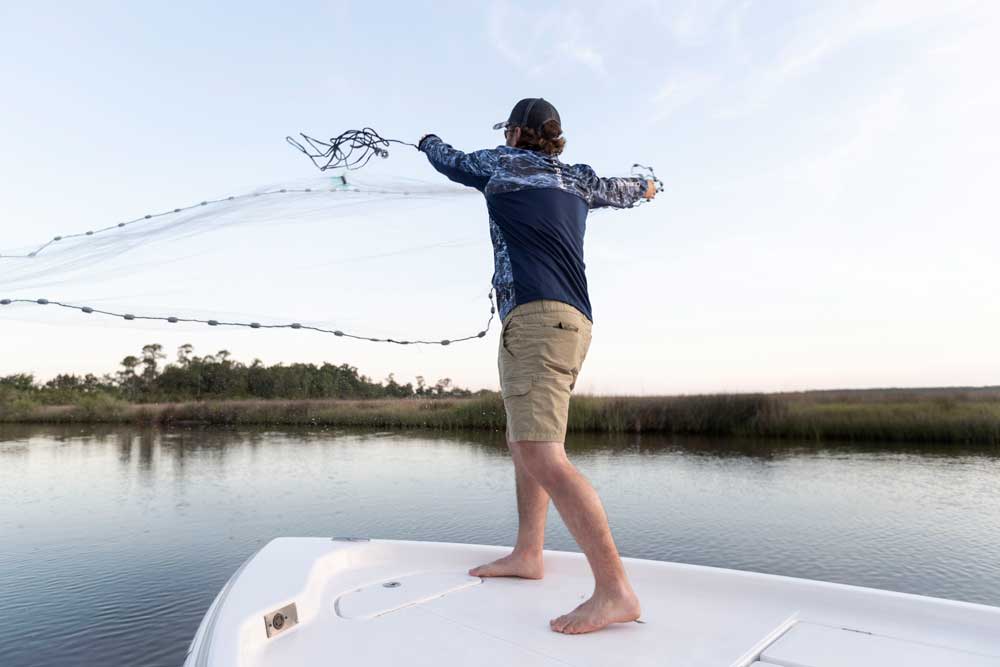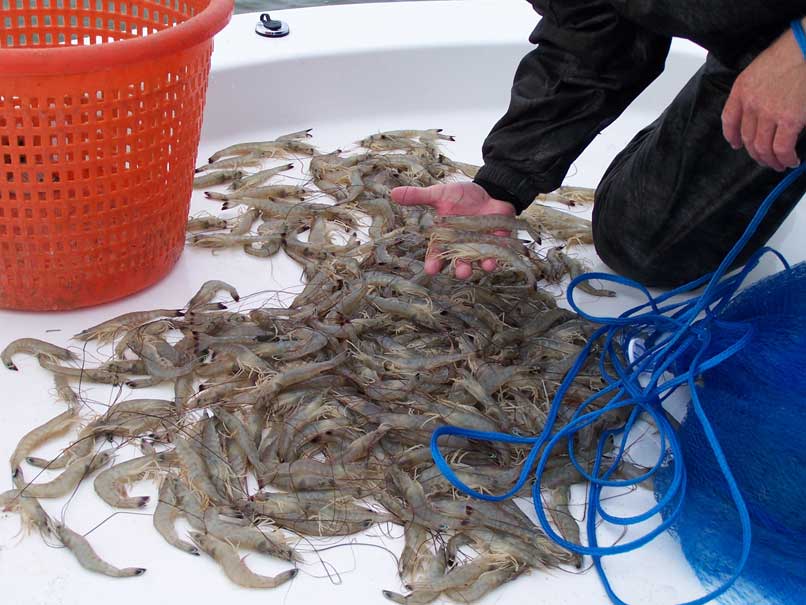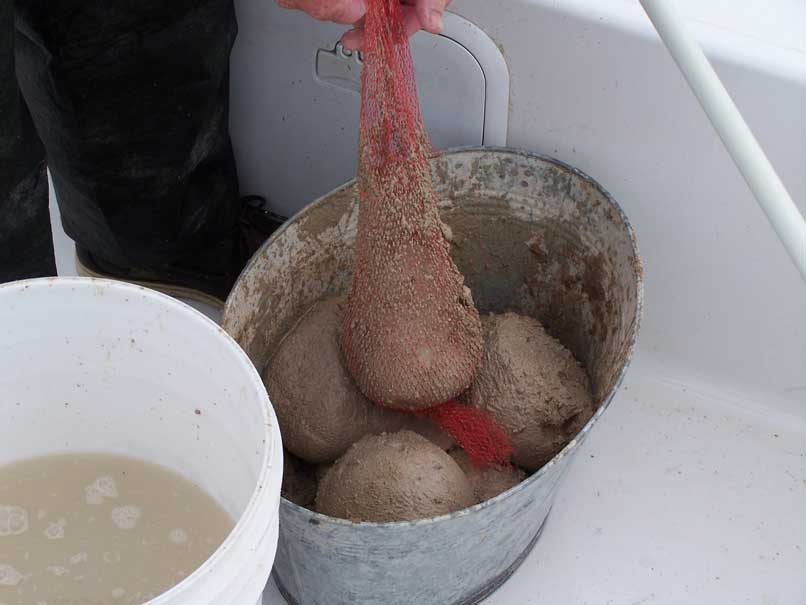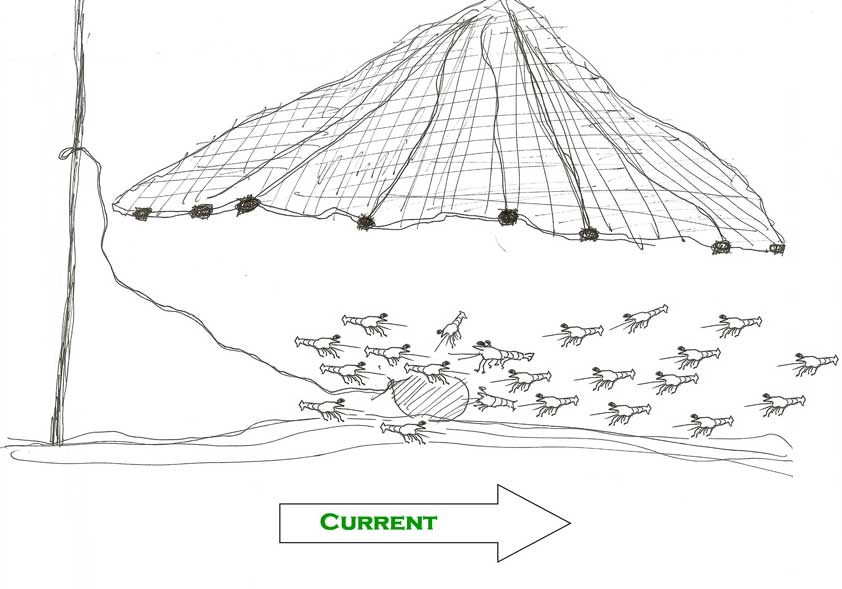Phillip Gentry

One of the many indicators that fall is in the air in southern coastal states is the seasonal migration of shrimp from their summering grounds in the marshes, bays, and creeks back to the open ocean.
In states where the practice is legal, shrimpers flock to these outgoing migrational routes during the fall to cast net for shrimp using a variety of enticements to congregate the tasty crustaceans into one area. For those unfamiliar with this practice, “shrimp baiting” may seem too easy of a way to collect shrimp, but that is far from the case.
Following are a few tips that can take you from a beginner to near expert in just a few outings. It’s important to note that the laws regarding shrimp baiting vary from state-to-state and not knowing the local ordinance is not an excuse for not following the regulations.

Start Shallow Early In The Season
As most shrimp baiting states have an established season when baiting is permitted, it’s important to remember that shrimp, which typically live in relatively shallow water in the summer, will move deeper and closer to the ocean as the season progresses.
Typically, baited spots are marked with poles so the cast netter knows what area to cast to. It’s not unusual for half or more of a 10-foot pole to extend above the water at the beginning of the season and have only a few inches showing above water when shrimping at the end of the season.
Tripletail Fishing: Locating and Baiting
Use The Wind and Tide
Shrimp baiting is typically more productive when the water current is moving. Whether this current is tide driven or wind driven, set your bait and pole markers perpendicular to the current. Stacking bait piles in a row will make only the last 2 or 3 areas productive since the bait scent is blowing across redundant areas.
To maximize scent in the water, place your baits perpendicular to the current, which allows the scent to cover a broader swathe of water and therefore attract more shrimp as well as attract shrimp equally to each site.
Controlling Your Bait
Most shrimp bait concoctions utilize some type of clay to hold the bait together and sink it to the bottom where the current slowly melts the bait balls away, attracting shrimp to the source.
Rather than randomly throwing bait balls on a tidal flat, use an 8 – 10 feet length of cord and a mesh produce sack, the kind you buy produce in at the grocery store, to hold the bait ball. Tie a small loop knot at the end of the cord to slide up and down the pole and tie the other end to the sack. This way you know the bait ball will be exactly 10 feet directly down current from the marker pole.

Since the idea is to get the horn of the net to settle directly over the ball with each cast, calculate the amount of drift needed and ensure the weight line lands accordingly.
For example, a 10-foot net has a 5-foot radius. If the net drifts two feet before settling on the bottom, then your goal would be to land the edge of the net three feet from the marker. A net edge landing three feet from the marker with a 2-foot horizontal drift will settle the net’s horn exactly over the bait ball, (assuming it’s on a 10-foot leash) and the remaining net will completely encircle the bait.
Make Your Own Bait
The best bait balls are typically homemade concoctions versus commercially made baits. A tried and true recipe for shrimp bait is to create a 50/50 mix of kaolin powder (available from art supply stores) with fish meal. The mixture will require a liquid to bond it together so add enough fresh menhaden oil, also called “Menhaden Milk” to the mix until you get a slimy but adherable ball about the size of a soft ball.

Boat Positioning
A team of shrimp baiters, one who drives the boat and one who can throw a 10-foot net multiple times, is a deadly combination. It will take practice to pick up on your partner’s cues of when to throttle up, when to shift to neutral, and when to back off to allow for the cast, settle and recovery of the net.





























